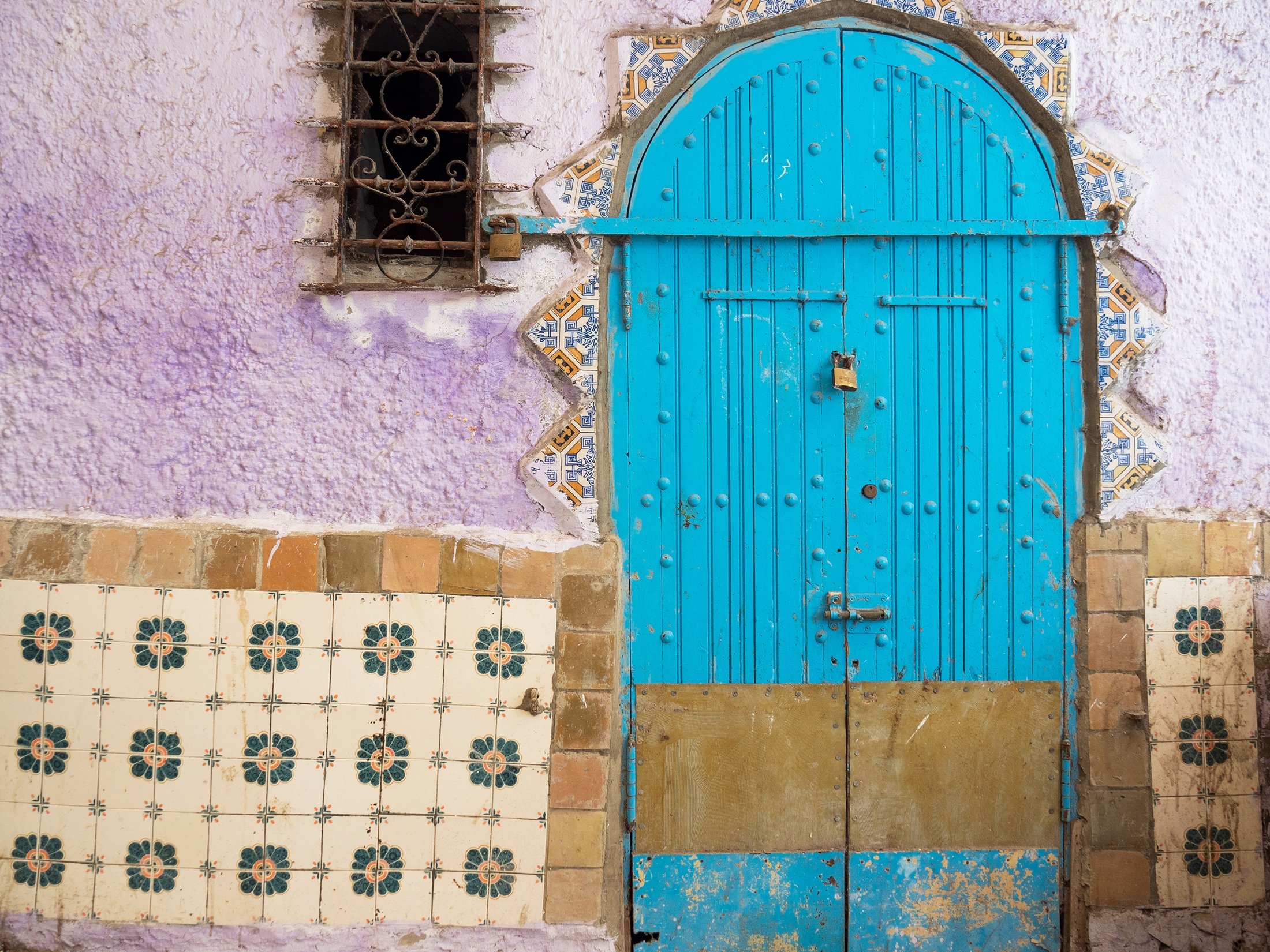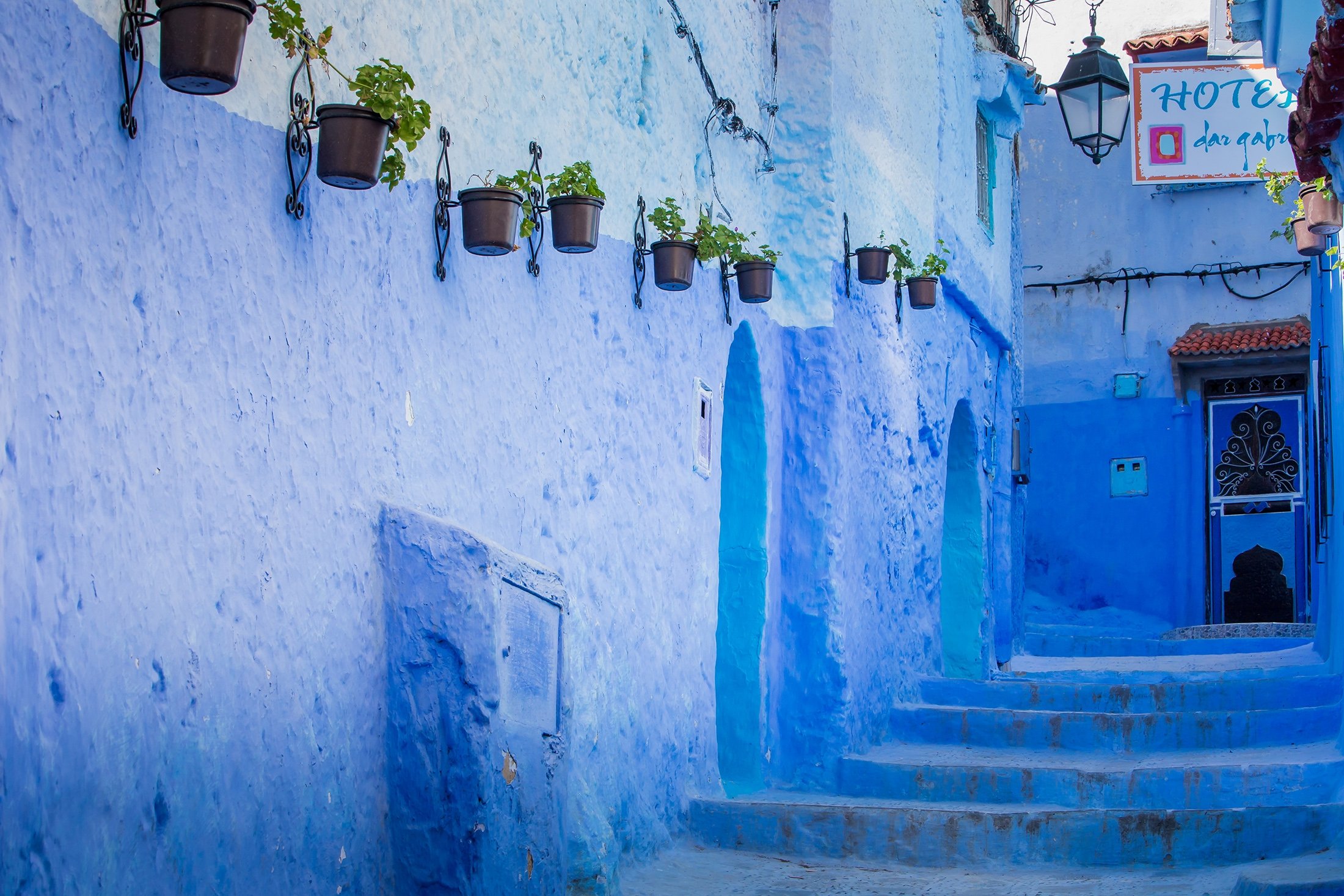© Turkuvaz Haberleşme ve Yayıncılık 2025
Anyone who has seen "Casablanca" – and many who haven't – knows the sheer beauty of the Moroccan city and its romantic image. The same goes for those who have watched "The Bourne Ultimatum" and got a glimpse of the alleys and the intricate architecture of Tangiers, but Morocco is so much more than what can be gleamed from snippets in movies, and much more beautiful than the sum of its parts – and now might be the perfect time to get a good in-person look.
Travelers are slowly trickling back into Morocco following the end of a flight ban to combat the surge in omicron infections that emptied the North African kingdom's airports, beaches and tourist sights.
Following a renewed global surge in infections due to the omicron variant, the spread of the coronavirus has fallen in Morocco in February, making travel plans less risky.
Morocco issued a flight and ferry ban in November, but has now welcomed back its first travelers from Europe following a relaxation of restrictions in February.
Now is the time to start daydreaming about open-air bazaars, surfer-friendly beaches and Andalusian-Moorish cityscapes. Here are five spots to consider visiting.
Tangier is best navigated with a sense of curiosity, where getting lost in a maze of alleys and picking where to go based on a whim is the whole point of a trip to this coastal Moroccan city.
You can feel the old city pulsating in uptown kasbah and downtown medina, where cubed homes are stacked asymmetrically atop each other, cats doze on benches and walls are painted turquoise and yellow.
It's here where you can visit the tomb of scholar and adventurer Ibn Battuta, known as Morocco's Marco Polo, who lived in the 14th century and was born in Tangier. Unfortunately, access to the tomb is closed.
The city's strategic location helps explain the long list of people who have ruled Tangier, which has a long history as a place of trade and a port. Begdouri repeatedly speaks of a "melting pot," of a place where "people, culture, architecture and religious backgrounds mix."
Tangier was traditionally a liberal, cosmopolitan place, where gay American writers like Tennessee Williams and Truman Capote came to visit. There's been much ink put to paper by foreign visitors about the magic of Tangiers, with another American writer Paul Bowles saying he "loved" this city, and French painter Eugene Delacroix feeling like someone "who is dreaming and sees things but fears that they will escape him."
It's the constant stream of bright, everyday scenes that sear into the visitor's mind: Open-air bazaars, merchants selling all types of wares, a motorcycle cart forcing its way through a narrow passage.

Long, sandy beaches peppered with broken shells extend toward the faraway ocean. Apparently, this is where the king of Morocco likes to take his holidays.
Tamouda Bay is the name of the stretch of coast south of Fnideq in Morocco, sometimes referred to as the "Moroccan Riviera." Does it deserve this lofty title?
With the exception of the fishing village of M'Diq, there is no genuine civilization along the 25-kilometer (15.53-mile) Tamouda Bay – only holiday resorts, apartment buildings and the Marina Smir, with its cafe terraces and glitzy yachts.
Anyone choosing Tamouda Bay as a holiday destination might be disappointed with this display of Mediterranean mediocrity. But then there are the day trips – such as the medina of Tetouan, a UNESCO World Heritage site.
The medina, one of the best-preserved old towns in Morocco, makes creative use of colors: green doors mean shops, brown doors private houses. It's impossible to explore every crevice of the town as there are 4,000 alleys and about 100,000 people live here.
The sun filters light into narrow alleys. Kittens roam around, old people saunter slowly through the streets. Tourist stalls sell leather bags made at the town's ancient tannery, which still uses traditional methods.

Further inland from Tamouda Bay, in the Rif mountains, another highlight awaits: Chefchaouen. In the late Middle Ages, exiles from southern Spain settled here and built their own houses at the foot of the towering peaks.
They painted the entire town blue to dampen the glare of the sun. Today, it makes for some delicious Instagram shots: walls, facades, stairs, arches, window grilles, even entire pathways painted blue against a picture-perfect backdrop.
The historical city center of Essaouira was declared a UNESCO World Cultural Heritage Site in 2001. The blue and white facades of the houses recall the city's Portuguese past.
In the streets, the air smells of leather, oriental spices, peppermint tea and, naturally, fish. Hippies, artists and dropouts discovered the place back in the 1960s and 1970s, when such stars as Jimi Hendrix and Bob Marley came here to relax.
These days, it is mostly surfers who consider Essaouira a paradise. "The steady trade winds and the year-round pleasant temperatures attract surfers from around the world," says Hafid, a Moroccan who runs a surfing school in the coastal village of Imsouane.
Imsouane is among the best-known surfing and kite-surfing spots on southern Morocco's Atlantic coast, but there are many more kilometers of sandy beaches and surfing spots.
Morocco's 2,000-kilometer Atlantic coastline has more highlights waiting further north. On the road toward the capital Rabat, food lovers should not miss the coastal town of Oualidia. A favorite for Moroccans with its beautiful lagoon, Oualidia is considered to be one of the best places in the country for fish and seafood dishes.
Rabat is a highlight in itself. Most people know Marrakech and Fez, but Morocco's third royal city rarely makes it on to travelers' itineraries.
Rabat is nowhere near as touristy as Marrakech, yet has more to offer. The old city behind the fortress walls offers a fascinating labyrinth of alleys, Andalusian-Moorish gardens and great cafes.
If the capital city feels too hectic, a good bet is to head to the sleepy town of Asilah. It is one of the most scenic of Morocco's coastal spots, and yet hardly visited at all by foreigners.
Here, Moroccan artists have decorated the snow-white facades of the houses in the old city center with murals. The medina is located directly on the ocean and is protected by a medieval fortress wall. This is where Morocco's cultural diversity, in all its beauty, meets the thundering sea.
